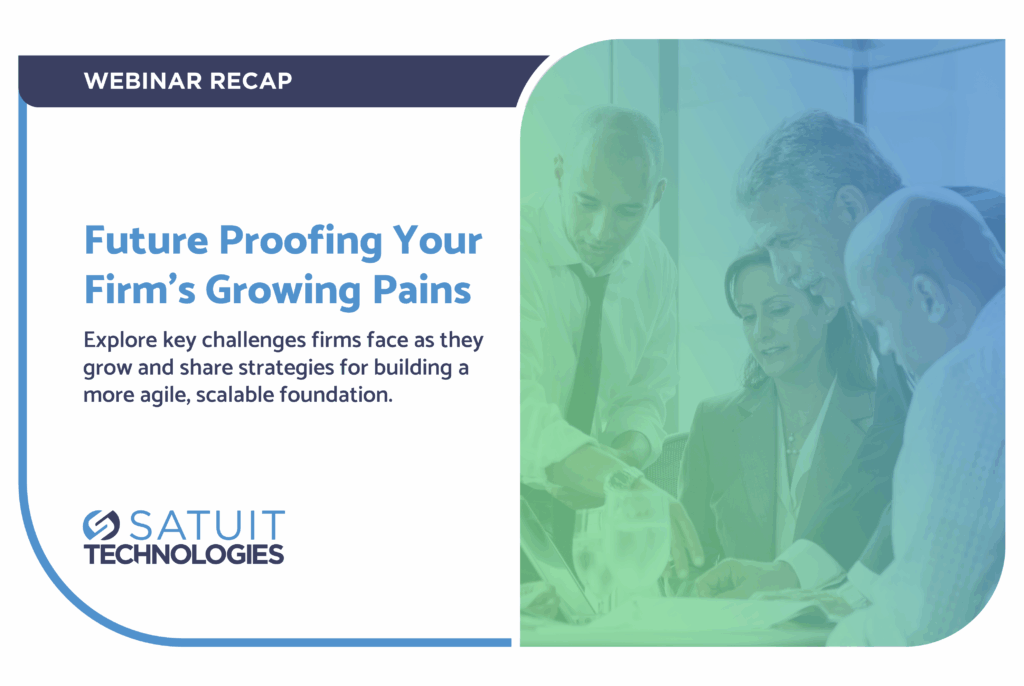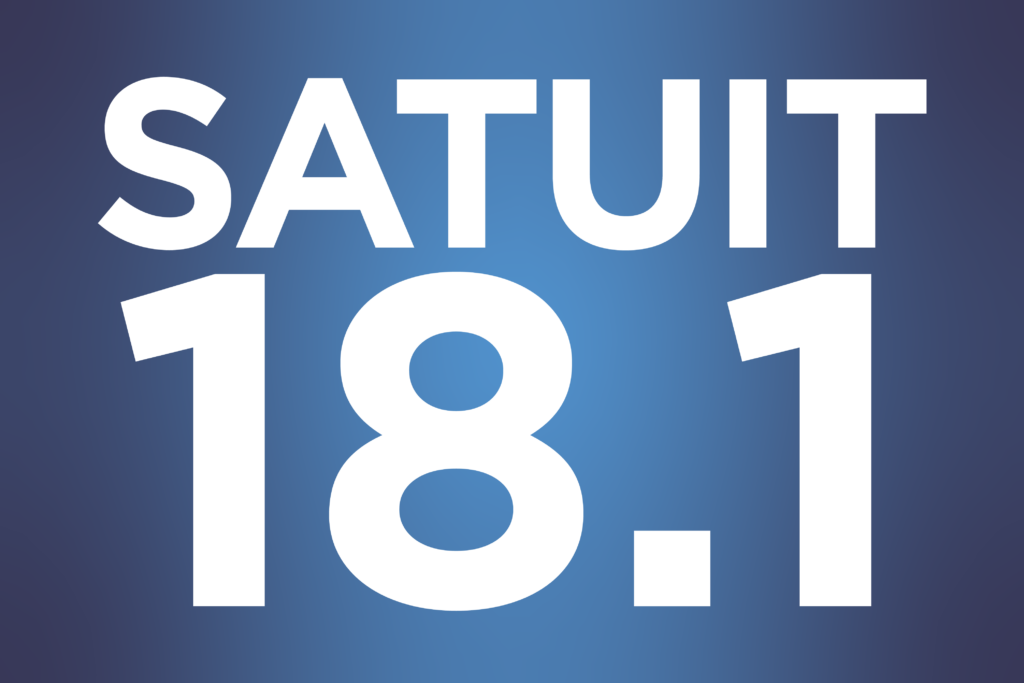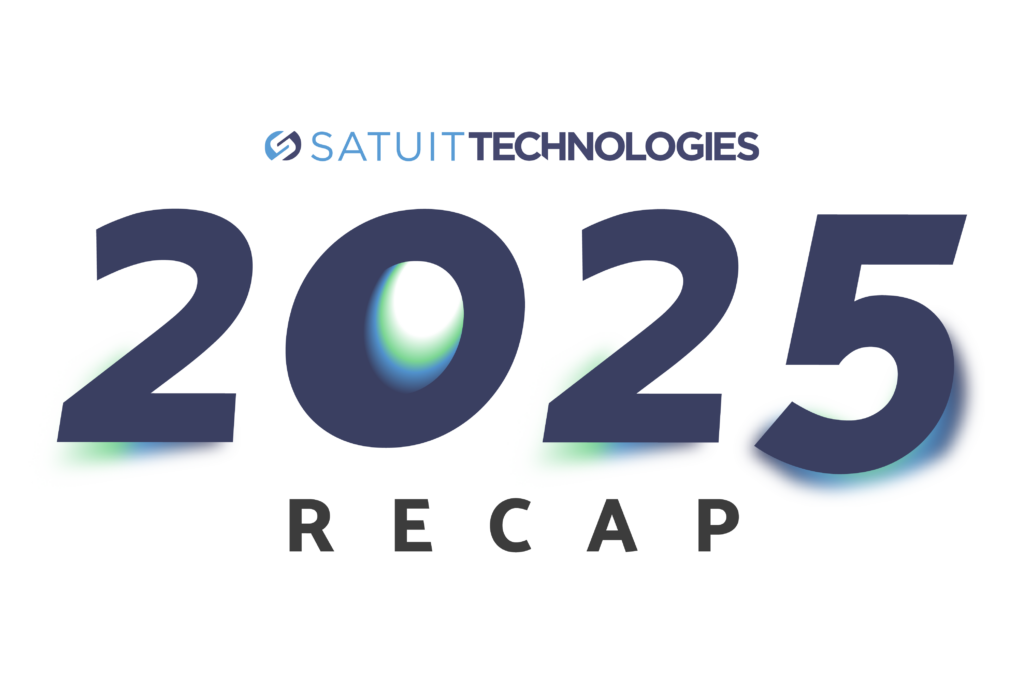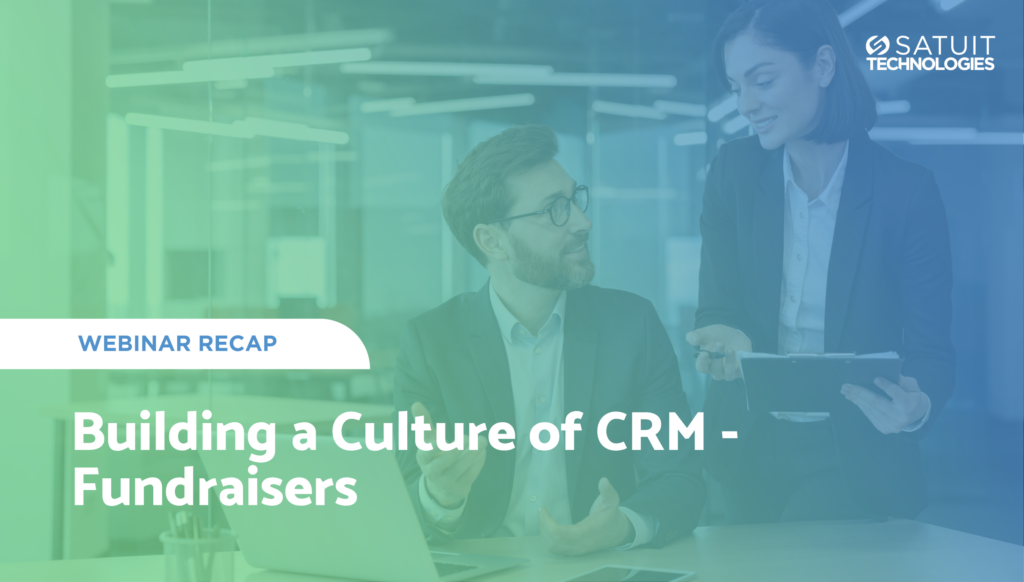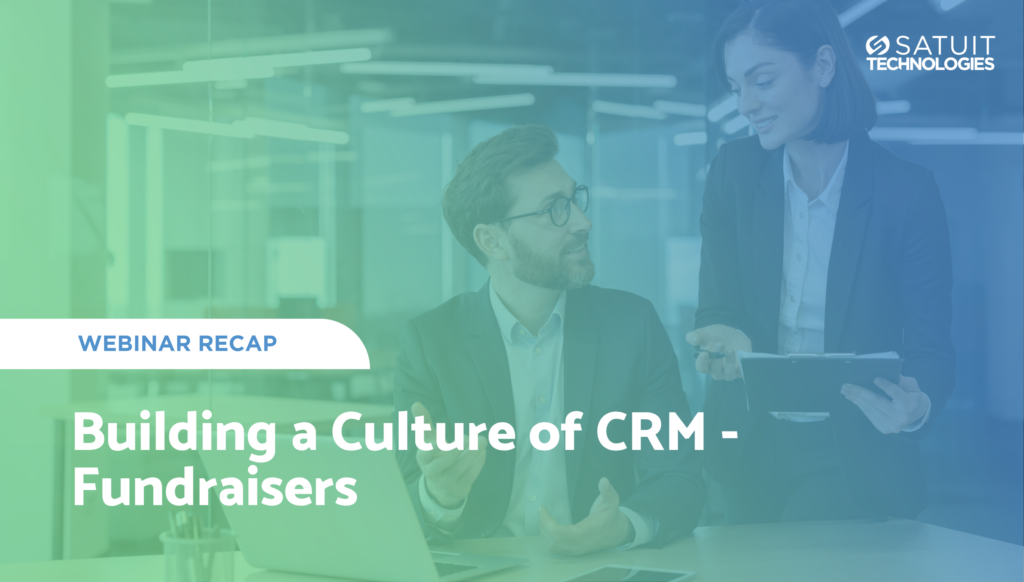Growing a business is exciting, but asset management firms know that scaling up comes with its own set of challenges. The “Scaling Smart Strategies to Future Proof Your CRM” webinar hosted by our team at Satuit discussed how firms can stay ahead of growth without hitting roadblocks like inefficient processes, poor data management, and rigid technology.
If you missed this latest webinar session, here’s a comprehensive recap and key takeaways for your organization so you can scale your CRM effectively for the future.
The Key Challenges of Scaling Asset Management Firms
One shared theme was the complexity firms face when growing and diversifying, including:
- Complex business operations from adding new funds or strategies.
- Communication breakdowns as teams grow and become more specialized.
- Rising investor expectations requiring firms to maintain agility and precision.
The webinar explored how the right strategies and tools can help overcome these challenges. Below are the main topics discussed during the session.
People Structure for Scalability
Your people are the most important piece in ensuring scalability. As you grow and diversify, organizations shift from a handful of founders wearing many hats to a team of highly focused specialists. To successfully make the transition, here are some key focus areas:
- Role-Based Permissions and User Types: Avoid granting universal system admin access. Instead, tailor permissions to align with specific job functions and responsibilities.
- Supporting Specialization: With growth comes specialization. Workflows and CRM interfaces must adapt to changing tasks and responsibilities.
- Ensuring Continuity During PTO and Turnover: Plan for transitions by pooling team knowledge into institutional memory and standardizing workflows.
To future-proof your CRM, define job-specific interfaces and workflows that bring clarity to employees’ day-to-day roles. This reduces confusion, improves adoption, and ensures smooth collaboration across teams.
Pipelines Tailored to Opportunity Types
Effective pipeline management is the backbone of an asset management firm’s ability to grow AUM. Customization is crucial as every firm structures its opportunities differently. Our key recommendations for quality pipeline management include:
- Separate Pipelines: Structure them by team, region, fund type, deal flow segmentations, or other variables critical to your business.
- Tailored Stages and Fields: Ensure pipelines reflect your specific sales process and make it easy for users to input and track the most relevant information.
- Dashboards and Stakeholder Reports: Empower leadership with real-time data through actionable dashboards.
A one-size-fits-all all pipeline won’t work in a growing firm. Designing pipelines tailored to specific opportunity types ensures your firm can act on patterns, trends, and identify bottlenecks before they become roadblocks.
Processes Enable Repeatable Success
A smooth internal process is key to scaling sustainability. Satuit broke down strategies to simplify and standardize operations. Here’s what you need to know:
- Dynamic Forms and Field Visibility: Only show users fields relevant to their current stage and role. This keeps interfaces clean and focused.
- Automate Alerts and Tasks: Leverage workflows to create automated follow-ups, trigger alerts for inactivity, or schedule team reminders.
- Close Out Tasks Effectively: Always tie activities back to actionable next steps to ensure no opportunity or client falls through the cracks.
Automating repetitive tasks and standardizing processes means staff can focus on high-value work. It also results in fewer errors, higher compliance, and better customer satisfaction. Build processes for your team to follow.
Data Hygiene and Institutional Memory
One major concern for firms is maintaining clean and actionable data. This is a common challenge that many organizations face, regardless of the CRM utilized. Poor data hygiene leads to inefficiencies and missed opportunities. The webinar emphasized:
- Better Data = Better Decisions: Cleaner inputs provide firms with analytics they can trust to guide strategic decisions.
- Enduring Knowledge: CRMs should capture the institutional memory necessary to maintain continuity through exits, M&As, and leadership changes.
- Standardized Data Management: Ensure consistency across the organization by setting up standardized nomenclature, workflows, and input rules.
“Your CRM isn’t a fancy Rolodex,” presenter Terry Dolan stated. It should serve as the single source of truth for all client and operational activity. Investing time in cleaning up and maintaining your CRM ensures better forecasting, smoother transitions, and consistent success.
Why Partnering With Satuit Makes Sense
Satuit brings over 30 years of experience building CRM solutions for asset managers and buy-side investor teams. Here’s why Satuit CRM stands out:
- Industry Specific: CRM built specifically for asset managers and buy-side investors, with tools to scale your organization.
- Configurable CRM Platform: Fully scalable and adaptable to changing business needs.
- No Expensive Consultants or Developers Required: Easy-to-use tools allow team members to easily tweak workflows, permissions, and data structures.
- Simplified Onboarding: Built-in features for guiding adopters through processes reduce ramp-up time and improve usability.
Satuit’s CRM is designed to meet the unique challenges and demands of asset management firms today and scales for the future.
Future Proof Your CRM
Scaling a business doesn’t have to feel like a challenge. With the right mix of strategy and adaptable solutions, you can clear roadblocks, improve efficiency, and build for the future.
If you’re ready to future-proof your CRM and work smarter, Satuit is here to help. Watch the full webinar recap, download our CRM scalability checklist, or schedule time with our team to learn more.
